High above the Old City : the mystery of the bells of St Saviour
In the past few weeks, the researcher Alex Rodriguez Suarez, a specialist in the question of sound in the history of the Middle East, has started studying the bells of the convents of the Custody of the Holy Land. This is the occasion for the museum to tell you more about the noisy residents of the St Saviour bell tower.

Built at the end of the 19th century, the St Saviour bell tower has six bells, which ring between C sharp and A flat. They were all made by the smelter Pietro Colbachini, in Italy, and they were apparently given by the Commissariat of the Holy Land of Venice, going by the emblems of the Custody of the Holy Land with “VENETIIS” in a scroll underneath, in bas-relief on the waists of the bells.
If these bells are all relatively recent (1884 for the five largest ones and 1906 for the smallest one), their decoration has numerous symbols linked to the history of the Franciscans and the Custody in Jerusalem.
Bells in the Franciscan tradition
One of the bells is very naturally dedicated to St Francis, the founder of the order. A responsory [1] sung on his feast-day, accompanied by a small scene in bas-relief showing the saint raised to heaven on clouds, can be seen on it. The medallion is surrounded by two other illustrations, St Peter on one side and St Paul on the other. These two saints are considered the two pillars of the Catholic Church. In the Middle Ages, St Francis heard from Christ the words “Go and rebuild my Church which is falling into ruins,” and Pope Innocent III saw him in a dream supporting the basilica of St John in the Lateran on the verge of collapsing. Just like St Peter and St Paul, Francis took part in building the Church, and wanted to return to this first Church built by the apostles, a poor church among the poor.
The large F sharp bell is dedicated to the Virgin Mary, accompanied by a phrase of the Marian hymn, “Tota pulchra es, Maria, et macula originalis non est in te,” which is extremely important for the Franciscans who, in the intense theological dispute of the trial of the Dominican Jean de Montson in 1386, defended the Immaculate Conception of the Virgin Mary [2]. This hymn is taken in part from the Song of Songs, and has been sung for centuries in the Franciscan tradition, from which it certainly comes. The bas-reliefs moulded on the bell thus show an illustration of Mary, as well as of lilies, symbol of purity.

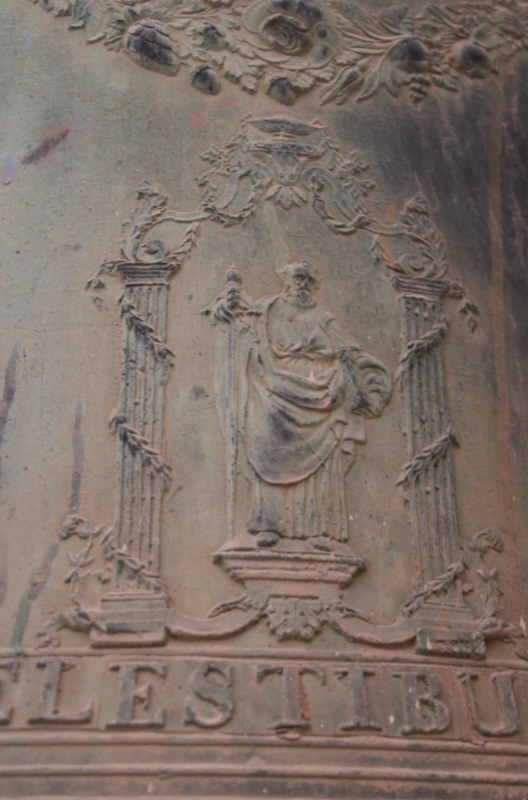
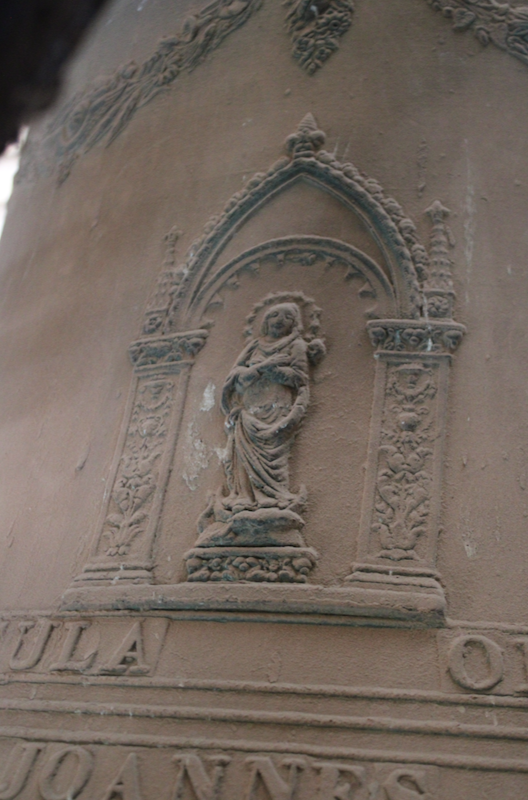
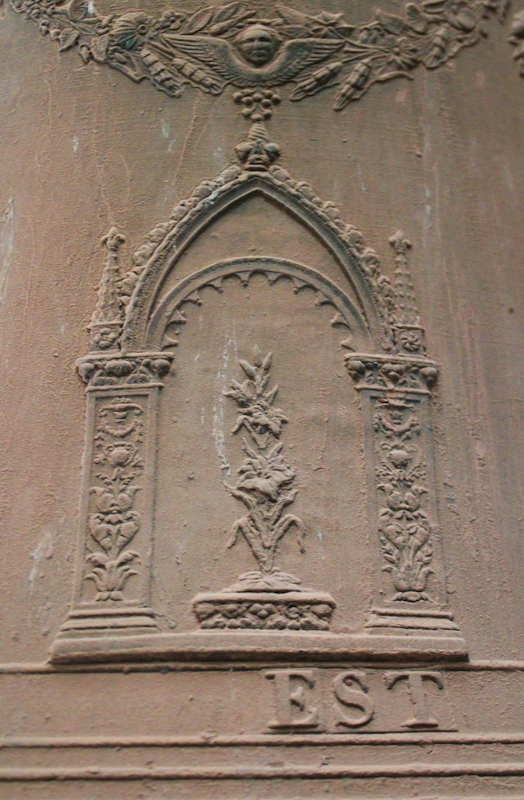
Bells in the wrong place?
One fact that may seem surprising is that all three bells evoke, in their decoration and their inscriptions, a geographical place of Jerusalem that is not St Saviour.
The F bell has several references to the Eucharist and to the Last Supper: medallions showing vines and bunches of grapes, ears of wheat and a scene from Christ’s last meal with his disciples. On the lower edge of the bell (or the lip) there is also a frieze with the instruments of the passion and other Eucharistic symbols, such as a cup. A phrase on the edge of the bell accompanies these ornamentations: “ In supremae nocte coenae recumbens cum fratribus, cibum turbae duodenae se dat suis manibus.” Taken from the hymn of Pange Lingua [3], written in the 13th century by Thomas Aquinas, this sentence can be translated: “The night of the Last Supper, at the table with his friends, he offered himself in food to the twelve Apostles with his own hands.”
Examining the bas-reliefs of the D bell, another scene evokes the same place as that of the Last Supper: one of the medallions shows a scene of Pentecost. The inscription which surrounds the bell in the centre repeats the words of the Gregorian responsory of the day of Pentecost.
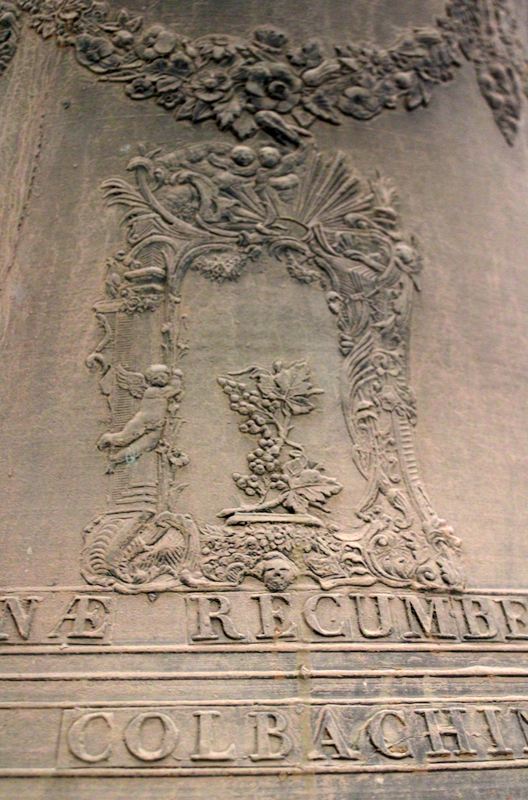
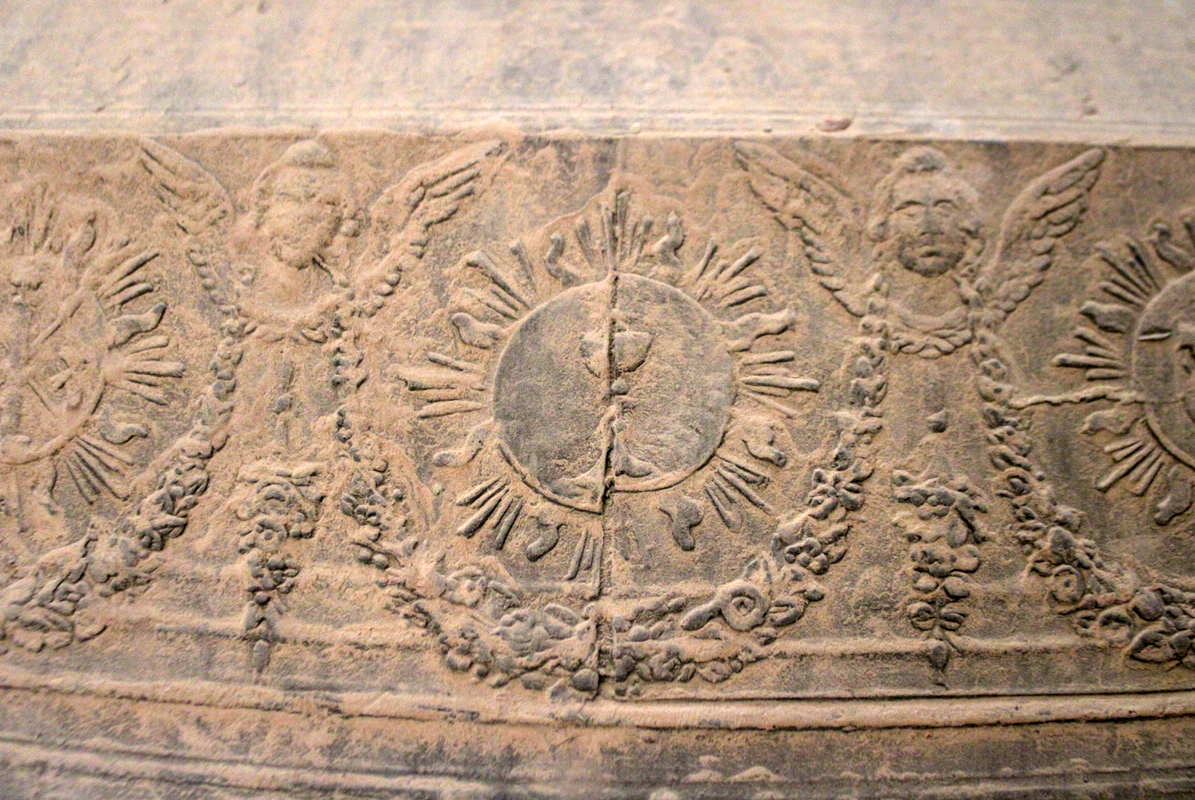


These two Biblical episodes took place in the same place, the Cenacle, topographically on the other side of the Old City of Jerusalem in relation to St Saviour’s Convent.
To crown everything, the most impressive bell, in C sharp, has the inscription “Lauda Sion Salvatorem larda ducem et pastorem in hymnis et canticis,” which can be translated as “Praise, Sion, your Saviour, praise your head and your shepherd with hymns and with songs.” The inscription relates to Mount Sion, the mountain in the Old City of Jerusalem, where historically there was once again the Cenacle. How can we explain this topographic discordance?
For a very long time, what we can call the headquarters of the Franciscans of the Holy Land was not at St Saviour but at the Cenacle, on Mount Sion. The Franciscans had obtained it in 1333 from the Sultan of Egypt. In 1342, the papal bulls of Clement VI “ Gratias agimus”» and “ Nuper carissimae “ appoint the Custos “Guardian of Mount Sion in Jerusalem” and the Cenacle became the central venue of the Custody.
In 1551 however, the Turks expelled the Franciscans from the Cenacle, who then bought in 1559 the present-day St Saviour’s Convent of Jerusalem and established the Custody of the Holy Land there. St Saviour thus became the new Sion which can still be read in the 19th century on these six bells. All this explains the references to the Cenacle, and the inscription of the hymn of “Lauda Sion.”
Each bell is thus accompanied by a quotation of a hymn sung in the liturgy: they call the friars with their own music to sing the praises of God through the psalms of the liturgy of the hours. The idea of creating a call to prayer by bells, similar to the call of the Muslims, is sometimes attributed to St Francis of Assisi, after his meeting with the sultan in Damietta in August 1219.
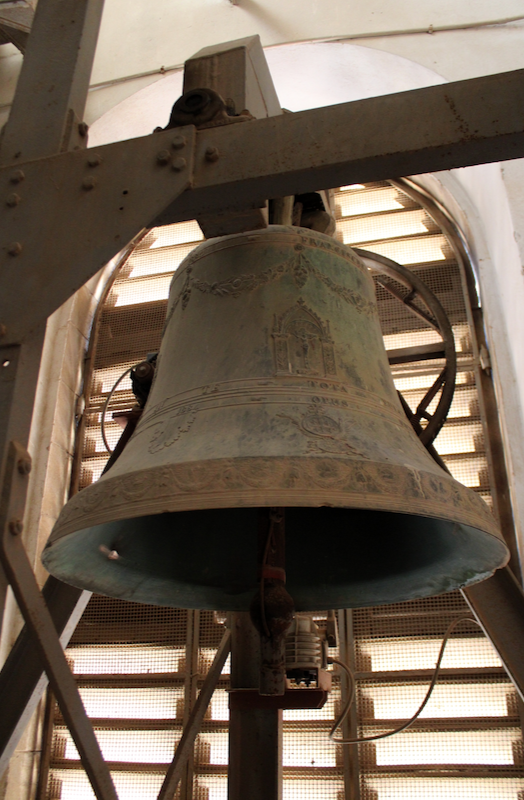
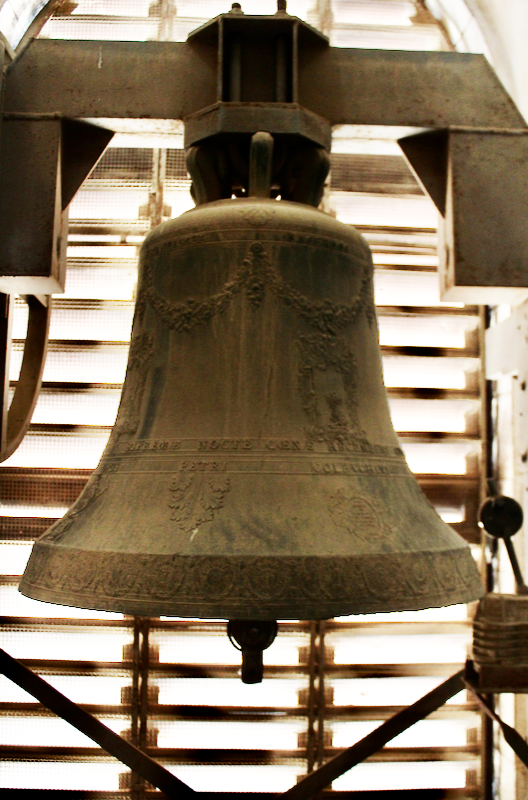
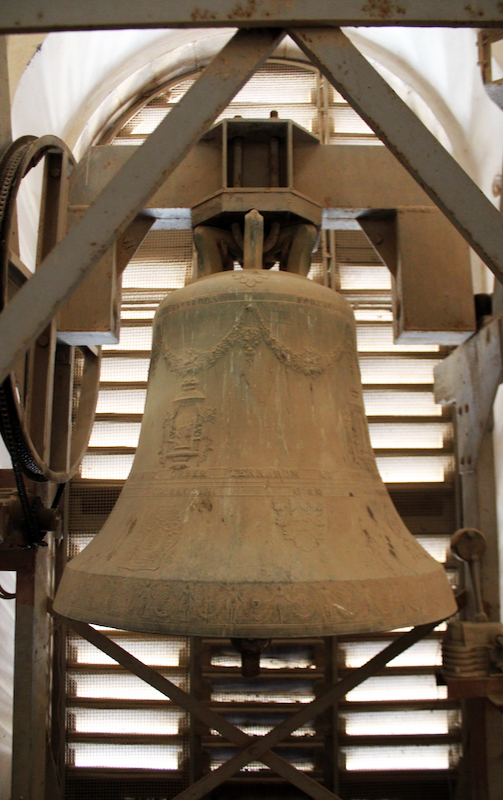
(Translated from french by Joan Rundo)
[1] The responsory is a liturgical song of the Gregorian repertoire sung by a soloist and then repeated by a choir.
[2] In the 14th century, an important theological dispute took place between the Franciscans and the Dominicans. One of the latter, Jean de Montson, stated that the Virgin Mary had been born with original sin. The Franciscans vehemently opposed this theory.
[3] The Pange Lingua is a hymn of the Office of the Holy Sacrament, attributed to St Thomas Aquinas, and sung in particular on Holy Thursday.



